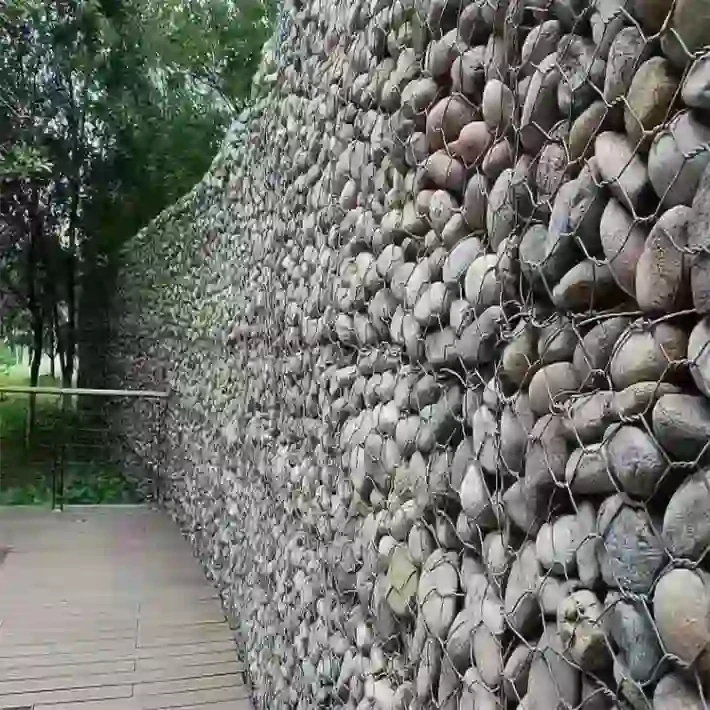-
 Phone:
Phone: -
 Email:
Email:

chain link fence weaving
The Art and Craft of Chain Link Fence Weaving
Chain link fencing is a popular choice for both residential and commercial properties due to its durability, cost-effectiveness, and versatility. It is designed to provide security while allowing visibility and airflow, making it ideal for a variety of applications. At the heart of every chain link fence is the method of weaving, a process that not only determines the quality and strength of the fence but also showcases the craftsmanship involved in its production.
Chain link fencing consists of a series of interconnected wire strands that form a diamond-shaped pattern. The weaving process involves using a machine that draws and weaves the wire into this characteristic form. Typically, the wire used in chain link fences is made of galvanized steel, which is coated with zinc to protect against rust and corrosion. This coating ensures that the fence remains strong and resilient over time, even in challenging weather conditions.
One of the most significant advantages of chain link fence weaving is its efficiency. The weaving process allows for rapid production, making it feasible to create large quantities of fencing quickly. This is particularly beneficial for large fencing projects, where time and labor costs can be significant factors. The ability to mass-produce chain link fencing does not sacrifice quality, as the machines used in the weaving process are designed to maintain consistent tension and alignment throughout.
Besides efficiency, the woven design of the chain link fence offers several practical benefits. The diamond pattern not only allows visibility but also provides a degree of security. Intruders can find it challenging to climb or cut through a well-installed chain link fence, making it a preferred choice for perimeters around schools, parks, and commercial properties. The gaps in the diamond pattern also allow for air circulation, which is particularly important in agricultural settings where livestock may be enclosed.
chain link fence weaving

Customization is another key aspect of chain link fence weaving. While the standard galvanized steel finish is common, various options are available to meet aesthetic and functional needs. Chain link fences can be coated with vinyl in a variety of colors, allowing them to blend seamlessly into the surrounding landscape. Additionally, there are different heights and gauges of wire available, enabling property owners to choose the appropriate level of security.
Adding to the functionality of chain link fences are accessories that can enhance their utility. Privacy slats, for example, are often woven into the chain link fabric to provide additional seclusion, which is particularly appealing for residential backyards. These slats come in various colors and materials, adding both privacy and an element of design variation.
The maintenance of chain link fences is relatively straightforward. Regular inspections for rust spots or damage are crucial, especially since the protective galvanization can wear away over time. If rust is detected, it is advisable to address it immediately, either by applying a rust-inhibiting paint or replacing the affected section of the fence. Proper maintenance ensures that the chain link fence remains a durable barrier against intruders and environmental factors.
In conclusion, chain link fence weaving combines functionality with craftsmanship, offering a reliable fencing solution for various applications. From residential backyards to industrial sites, the design and properties of chain link fencing make it an essential component in security and property demarcation. Understanding the weaving process highlights the importance of quality materials and workmanship, ensuring that these fences stand the test of time while providing peace of mind to property owners. Whether you’re considering installing a new fence or maintaining an existing one, recognizing the intricacies of chain link fence weaving can enhance your appreciation for this ubiquitous yet essential feature of modern landscapes.
-
Wire Mesh for Every Need: A Practical SolutionNewsJul.25,2025
-
Steel Fences: Durable, Secure, and Stylish OptionsNewsJul.25,2025
-
Roll Top Fencing: A Smart Solution for Safety and SecurityNewsJul.25,2025
-
Cattle Farm Fencing Solutions for Maximum SecurityNewsJul.25,2025
-
Affordable Iron Binding Wire SolutionsNewsJul.25,2025
-
Affordable Galvanized Wire SolutionsNewsJul.25,2025
-
Wire Hanger Recycling IdeasNewsJul.25,2025








